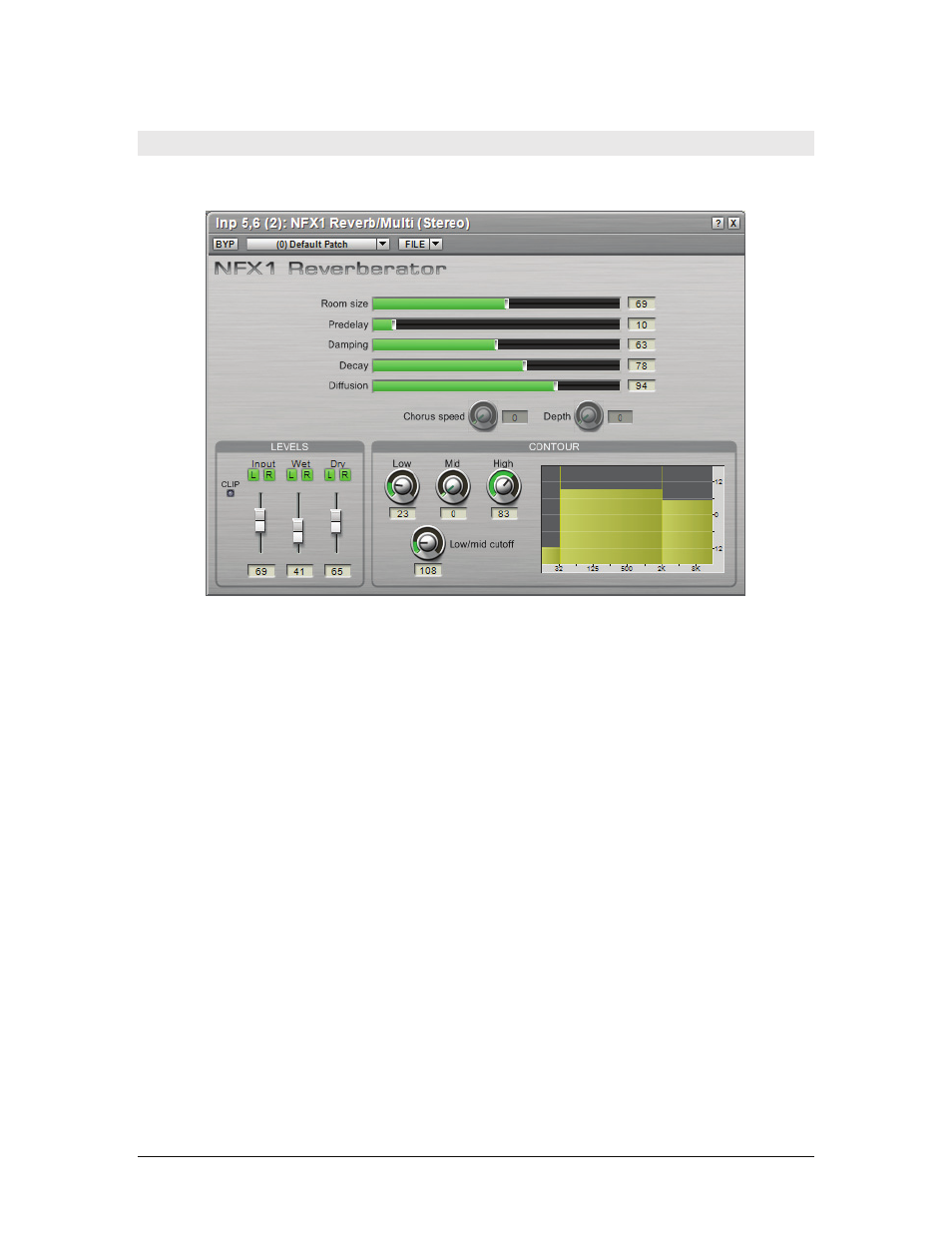Nfx-1 reverb parameters – Teac GigaStudio 4 User Manual
Page 147

GigaStudio 4 Reference Manual
147
NFX-1 Reverb Parameters
The NFX-1 provides reverberation, the effect created in a space as sound bounces off walls and creates myriad
reflections. The NFX-1 offers several parameters for customizing the sound.
Room Size:
This determines the volume of the virtual reverberant space. A larger size has a longer decay, and
gives a more spacious effect. A smaller room size gives a “tighter” sound that decays more rapidly.
Pre Delay:
This sets the amount of time between the initial signal and the start of the reverb, thus letting you
hear a few milliseconds of dry signal before the reverberated signal begins. This can enhance the realism of
instruments supposedly playing in a hall; just like in a real hall, you will first hear the direct sound followed
by the room ambience.
Damping:
Air absorbs high frequencies more readily than low frequencies, and delays the high frequencies a
little bit as well. Sounds that are further away have less perceived high frequency content. The Damping
control creates the effect of pushing the sound further away or bringing it closer by shortening the high
frequency decay time compared to the overall decay time. This also imitates the way various materials in a real
room (curtains, rugs, people, acoustical treatment) absorb the sound.
Decay:
This sets the length of the reverb’s decay time. Combining this with the room size allows for many
possible ambience characteristics. For example, you could have a large room size, but give it a smaller decay
time to minimize “muddying” or “blurring” the mix.
Diffusion:
Diffusion controls the amount of space between the reverb reflections. Higher diffusion settings
give a “smoother” ambience because the reflections are closer to each other, and are recommended for drums
and other percussive sounds. Lower settings sound more “grainy” with percussive instruments, but are
appropriate for vocals and sustained sounds, as the sustaining nature of these sounds tends to fill in the spaces
between reflections.